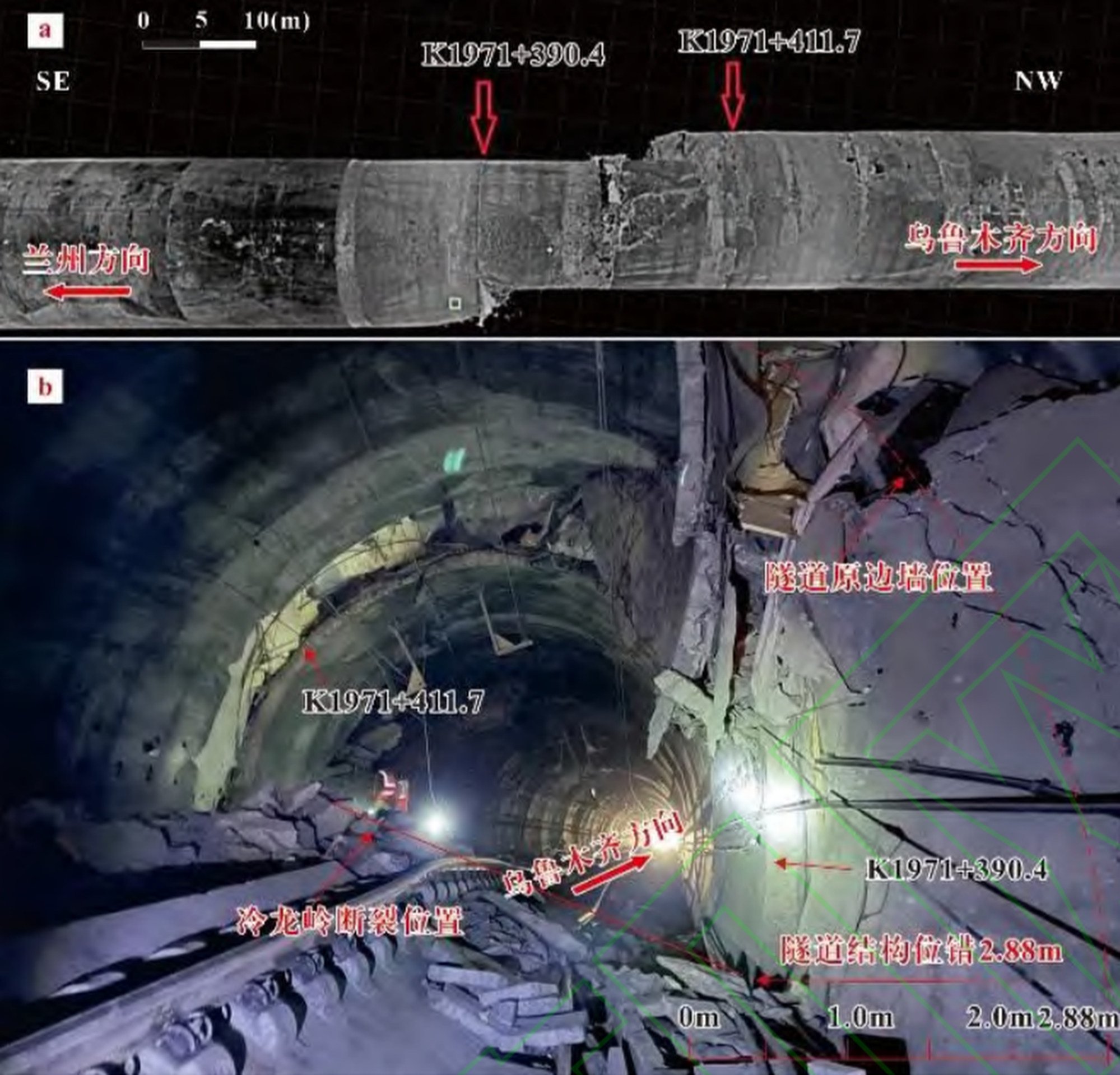According to Chinese media and public data, most of the reasons for suspension of the high-speed railway relate to once-vaunted tunnel projects.
The railway crosses the Qilian Mountains on the northeastern edge of the Qinghai-Tibet Plateau. The enormous folds and fault structures formed by crustal movement make the geology in the mountains extremely unstable.
Chinese engineers have long said the best way to cross the geographically unstable terrain is through tunnels. They once firmly believed that sudden geological disasters such as landslides and earthquakes would have a severe impact on surface structures but would cause relatively minor damage to underground projects – and even if the damage reached the tunnels, it would be relatively easy to repair.

However, Chinese engineers and scientists are now starting to realise that their textbooks might have been wrong and tunnels may not be the solution.
“The severe deformation and damage caused by earthquake destruction to tunnels, as well as the difficulty of engineering repairs, prove that tunnels are not an effective way to resist engineering faults,” engineers from the China Railway First Survey and Design Institute wrote in a paper published in the domestic Journal of Geomechanics on November 24.
“Therefore, in railway engineering risk selection, tunnel methods should be avoided when crossing relatively dangerous active fault zones.”
Are high-speed trains becoming Xi Jinping’s preferred way to travel in China?
Are high-speed trains becoming Xi Jinping’s preferred way to travel in China?
According to the paper, the Chinese engineers changed their minds completely after an earthquake on January 8 last year. Engineers say they are still haunted today by the magnitude 6.9 earthquake that occurred in Menyuan County, Qinghai province in northwestern China, with the epicentre just 4.5km from a high-speed rail.
The earthquake caused a new fault tens of kilometres long to form, with the new fault zone straddled by an important high-speed rail tunnel. Engineers who rushed to the scene after the disaster were shocked to see that the tunnel had been cut off by the force of the quake, with a horizontal displacement of 3 metres (10 feet) between the two sections and a vertical drop of more than 1 metre.
While repairing distorted rail tracks and broken wall surfaces is routine for engineers, reconnecting two almost parallel misaligned tunnels and ensuring that high-speed trains pass through without any problems was a significant challenge.
China’s railway workers and engineers applied tremendous effort to solve the problem and finally restored full operation of the high-speed railway in July. Construction of the entire line took just five years.
During the tunnel repair period, the Chinese government and state-owned railway companies upgraded and improved the entire railway, increasing its operating speed by a quarter, to 250km/h (155mph). Although it falls well short of the 350km/h in other parts of China, the difficult terrain has pushed modern engineering technology to its limits.
However, engineers remain concerned for the future, writing in the paper that they recommend strengthening “real-time monitoring of post-earthquake deformation across active fault zones, real-time changes in stress in engineering sites, and surface cracks in tunnel areas after tunnel repair and operation”.
The total cost of the Lanxin Express is as high as 143.5 billion yuan (US$20 billion), and each suspension may cause losses of hundreds of millions of yuan.
It is not known how this expensive lesson will affect future construction of China’s high-speed rail network, but public reports indicate the builders of some lines are trying to build bridges in valleys to cross difficult and dangerous terrain.
As the engineers said in the paper, their suggestions only target some specific locations, and most existing high-speed rail tunnels are not likely to pose this risk. So far, no other lines have been suspended at the same frequency as the Lanxin Express.
Xi’s Vietnam visit set to focus on rail link, rare earths amid rising US clout
Xi’s Vietnam visit set to focus on rail link, rare earths amid rising US clout
In less than 15 years, China has constructed more than 40,000km of high-speed railways, connecting nearly all major cities. There have been no passenger deaths caused by accidents in the past decade and the safety record of high-speed railways has surpassed that of aeroplanes.
China’s high-speed rail technology has been used in some countries such as Indonesia and Thailand, and many others have shown interest in introducing it. How to maintain an impeccable safety record abroad is a new challenge for Chinese engineers and scientists.

